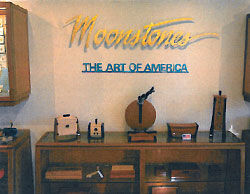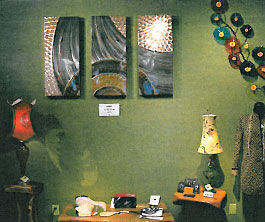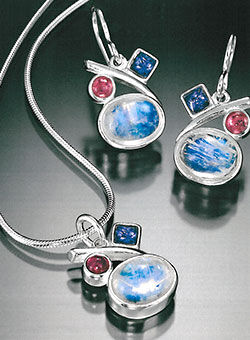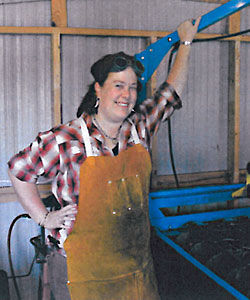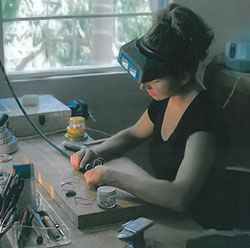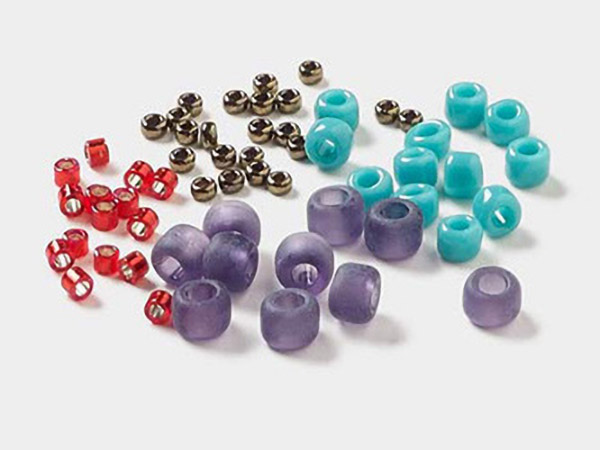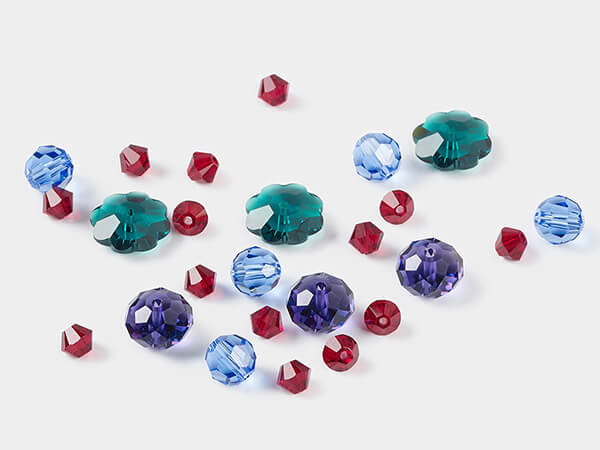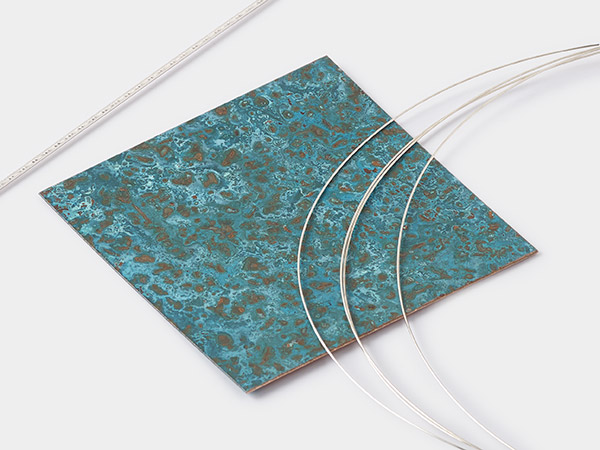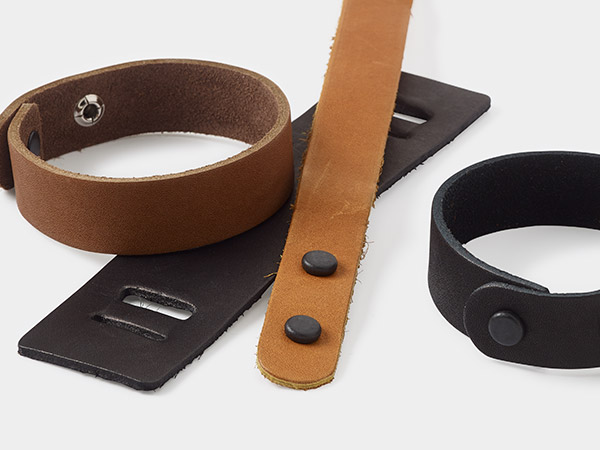13 New Rules of Handmade You Need to Know
by Jackie Adamany
The landscape of handcrafted is changing--and for the better. With change, though, come new rules. Understanding and embracing those new rules can only make your handmade business better and more successful.
American consumers are more aware of locally and American- made products, and are searching for them at local boutiques and galleries at an alarming pace. Keep these new rules for your handmade business close at hand as you move forward in your handmade business!
1. Take Good Photographs
Lindsey Beckwith, owner of Lindsey Beckwith Photography, is a professional photographer specializing in wedding photography--with a strong ability for capturing a product in the best light. Keenly aware of the power of a good photograph, Lindsey explains, " We live in a visual culture. Everyone has a camera in their pocket, and they communicate through images. Beautiful, engaging, well-composed images make an impact and create an immediate impression of your brand. You don't get a second chance to make a first impression. Display a knockout image of a product to a consumer and/or buyer, showing what the product does and the environment in which it is to be used, and watch what happens!"
2. Stop Blaming the Competition
There is always going to be competition. Don't let it define who you are, and don't let it become the scapegoat for your misfortunes. Learn from them and you will succeed.
3. Stay True to Yourself, Because Originality Rules
In other words, don't copy. Be unique, showcase your personality, and show the world what you are made of. Yes, in the beginning we learn our trade by copying a pattern or following along with an online video. But once you learn that skill, let your individual skills shine.
4. Think About Your Branding
Branding as it relates to your business cards, packing, and booth design is extremely important. But today, branding relates to so much more than that. Think about what you make and what it says about who you are as an artist. Do your products reflect this? Does your product line tell a story? Does it educate the consumer?
Christine Epstein, owner of Oceano Sea Glass Jewelry, takes into consideration where she lives, who she is, and the personality she wants her line to have. "What's worked for Oceano Sea Glass Jewelry is a clear and specific definition of what we make and who it's made for. This helps my product be seen and shopped for by wholesale and retail buyers. I think the more distinctive and consistent, the better. An artist must remember geographic, thematic, and demographic appeal are all important factors."
So go out there and make your line distinctive, cohesive, and full of personality. As Christine puts it, "This will shape advertising, marketing, and merchandising at shows, on the web, or even in a store. Specializing can drive what you make, help retailers understand what you make, and guide customers to buy!"
5. Edit, Edit, Edit
Know when it's not working. Just because you love a product in your line does not mean it will be your moneymaker. Understand that sometimes, your best sellers are your least favorite. Be able to face the reality that when something is just not selling, it may be time to retire it.
6. Stay on Top of the Trends
Green, upcycled, recycled, socially conscious, keeping it local and unique to a destination, are just some of the trends that are strong these days . One of the biggest trends is keeping it local. More and more stores are looking for local creative people whose product lines tell a story about a region. Consumers are looking to connect and establish a sense of place at home and while traveling. Leading us to Rule #7 ...
7. Keep it Local
Today's consumers are starting to pay more attention to handcrafted and Made in the U.S.A. They want to know where a product comes from, how it's made, and, most importantly, they are willing to pay a bit more for keeping it local.
Nancy Markoe, owner of Nancy Markoe Fine American Craft Gallery in St. Pete Beach, Fla., has been in business for over 29 years. She has been selling handcrafted, Made in the U.S.A. products for years and says, "For the past few years, we have noticed the desire of many of our customers to purchase locally made American crafts. This includes both our home-based clientele and tourists visiting our resort beach."
She explains, "For 29 years we have carried, exclusively, the works of over 400 American artisans from around the country. We believe it all to be important, no matter where it is from! However, following this trend in awareness, we are using signage to clearly mark which of our displays contain the words ‘Florida Artist."'
Robert Unger, owner of Moonstones Gallery in Cambria, Calif. agrees, "Our gallery is in a tourist area, so our customers are looking for locally crafted items. They want something they can take home with them that reminds them of this beautiful area."
8. Embrace Technology
It's not going away, and it's only going to become more mainstream. Get a website or blog, join a couple social media platforms, and embrace a new way of connecting with your customers. Look around--everyone is on their smart phones, tablets, and laptops. If you are not found online, many customers will forget you. Remember your competition is online, and you should be, too.
9. Be Aware of Store's Personality
Doing your research before you reach out to a store owner is vital. The fact that a store embraces the handcrafted, Made in the U.S.A. movement does not mean your product will sell at any particular store. Judy Schroeder of Schroeder Studio Gallery in Orange, Calif. explains, "As a gallery owner, I've been very aware of our ‘brand', if you will. Each space needs to have its own personality--gathering work willy-nilly doesn't make for a cohesive whole. I often see wonderful work that I love, but it wouldn't fit in our mix."
Do your research. Look at the store's website and social media, and then make an educated decision on whether to reach out to the store, or to pass. Time is precious for both the buyer and the artist; make that time work for both of you.
Lindsey Beckwith, Lindsey Beckwith Photography
Lindsey Beckwith shops for local work from handcrafted artists. This is her advice from a consumer point of view:
- With social media, people can interact with your brand through images in a way that was never possible before. Use social media!
- People are used to previewing things online and having them delivered with a few taps on the screen. Without beautiful, clear images of your product, how will you reach these people?
- Beautiful, engaging, well-composed images make an impact and create an immediate impression of your brand images. Invite people to comment, like, and generally interact with your brand.
- Photography, unlike illustration, presents a "real" version of the artist's work.
- I am more likely to buy a product from a local source. I support the community of artisans who support my business. Photographers and artists work hand-in-hand to present the best possible version of their product and talent to the consumer. When it comes to handcrafted work, I'm looking for unique designs that I can't find from big-box stores. I expect better quality than something mass-produced in China or Vietnam, and it's a bonus when the artisan becomes a friend. I like feeling like I'm supporting a person vs. a corporation. I especially like supporting artisans in my community.
10. Quality Should be High Priority
Make your best, and don't cut corners to save a buck. Consumers are becoming more and more educated on buying handcrafted work, and they expect quality products. Roxann Chalfant, owner of Bottle Benders says, "Our rule has always been to make the best product we can. We believe in making a product that not only lasts a long time, but can also be repaired to prolong its life."
But don't think quality only applies to your products. Quality customer service is vital to a successful handmade business. The competition is strong; don't let customer service slip. Roxann knows how to keep them coming back for more: "My personal rule for running our business is to always try my hardest to keep our customers happy. Happy customers are the lifeblood of our business. They keep buying our product, and they keep promoting us to their customers."
11. Price Competitively
Perceived value is a concept you are going to hear about more and more. If you learn how to accurately price your work, half of the battle is won. Underpricing only hurts you and every other artist out there. Overpricing will get you nowhere. If you have one goal this year, it is to learn how to properly price your work.
12. Think Twice Before you Mass Produce
Robert Unger buys all American craft. The successful gallery owner knows there is a line between mass-produced products that are made in the U.S.A., and those that are handcrafted--and that line can be a bit blurry. "Many of our craft artists use high-tech machinery just as large manufactures do. The difference seems subtle but there really is obvious quality superiority with small production craftsmanship. Inherent in mass production are compromises in detail and quality."
Creativity and the variation in the products are the nature of the handcrafted work. As Mr. Unger explains, "It is not only a visible and tangible difference, but it usually connects to your inner sense of creativity. You recognize the spark of individual effort. We can all see the difference between something made with love and something made just to sell. I think that is my number one rule--to look for a creative item that is made with care and love. Mass-produced items, even made in the U.S.A, do not contain that."
13. Know How Retail Shop Owners Buy Handmade
You know all about your craft, you have studied and perfected your talents, and you make a distinctive high- quality line. But do you know how buyers buy?
Nancy Markoe knows how to buy, and she knows how to sell. "When purchasing work, we have three major criteria that we follow: quality, design, and price.
Quality: We strive to carry works of the finest quality. The proof is in how finely finished pieces are, and how the best products and applications are used in constructing a piece--whether it is jewelry or a jewelry box.
Design: A well-designed piece, be it a "beauty" or something whimsical or comical, should have all the basics of good art: balance, composition, texture, space, shape, and aesthetics.
Price: Does the piece have a price tag that matches its perceived value?
Other Criteria: The work has an intrinsic feel that speaks to me--little touches that are unique to the artist--the work is fresh and not a rehash of other work out there. It needs an individuality of design that is artist recognizable."
Armed with this knowledge, your handcrafted business is sure to succeed with diligent application and practice. Best wishes on your endeavors!
Shop for Your Materials Here:
Have a question regarding this project? Email Customer Service.
Copyright Permissions
All works of authorship (articles, videos, tutorials and other creative works) are from the Fire Mountain Gems and Beads® Collection, and permission to copy is granted for non-commercial educational purposes only. All other reproduction requires written permission. For more information, please email copyrightpermission@firemtn.com.


